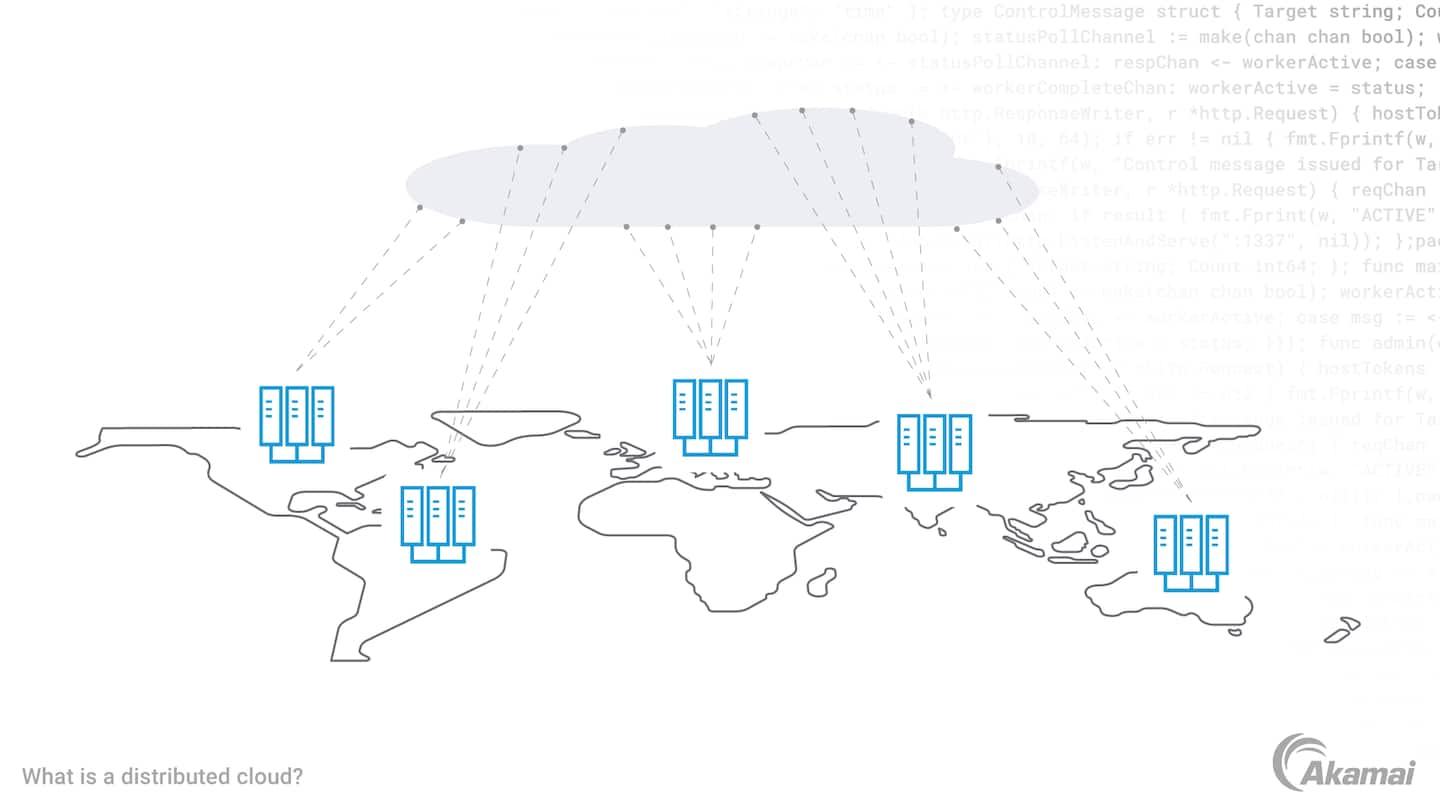Bare metal refers to a single-tenant, physical server. In contrast to virtual servers or multitenant servers — where multiple users or companies use and compete for resources on the same physical server — use of a bare metal server helps ensure that the performance and stability of computing resources is not impacted by other users on the same server.
An introduction to cloud platforms
A distributed cloud is a form of cloud computing in which an enterprise utilizes public cloud infrastructure in multiple geographic locations while operations, governance, and updates are managed centrally by a single public cloud service provider. The distribution of cloud services can help organizations meet objectives for application performance and response time, edge computing, regulatory mandates, or other demands that can be satisfied by providing cloud services from locations closer to end users and devices. The use of distributed cloud computing is driven by the rise of Internet of Things (IoT) networks, artificial intelligence, and other use cases that must process vast amounts of data in real time.

How does a distributed cloud work?
In distributed cloud infrastructure, a public cloud provider’s entire technology stack is distributed to different locations, wherever a customer needs it. This may include on-premises locations in the customer’s own data center or private cloud, or in third-party data centers or colocation centers around the world, all managed from a central control plane. This distributed architecture provides more control over where data is located, to meet regulatory requirements. It also enables cloud providers to serve data from locations closer to users, improving the performance of cloud databases, applications, and streaming media.
What are the advantages of a distributed cloud?
- Less latency. By moving processing tasks closer to end users, distributed cloud services can minimize latency and increase the responsiveness of applications.
- Greater scalability. Distributed cloud architecture makes it easier for organizations to quickly expand to edge locations without building out new data centers.
- Increase visibility. Organizations can use a single console to manage and monitor activity within hybrid cloud and multicloud infrastructure that forms a distributed cloud.
- Improved reliability. Distributed systems are inherently more fault-tolerant and offer greater redundancy. If cloud services in one location go offline, organizations can continue to access cloud services from other distributed locations.
What are the limitations of a distributed cloud?
- Security issues. With data and infrastructure distributed throughout the world, managing data and cloud network security can be more challenging.
- Backups. Backing up and recovering data from a distributed architecture can be more complicated, as many regulations require data to stay in specific locations.
- Availability. The various locations in a distributed cloud environment may have different connectivity models and capacities, limiting bandwidth and requiring upgrades to slower connections.
- Complexity. Distributed computing systems are more difficult to deploy, maintain, and troubleshoot than centralized cloud computing implementations.
- Cost. Distributed cloud computing systems require a larger investment up front, and adding capacity for increased processing may add to the initial expense.
What are use cases for distributed clouds?
Some common use cases for distributed clouds include:
- IoT networks and machine learning applications. Technologies such as self-driving cars, healthcare imaging, smart buildings, and real-time analytics benefit from the low latency that a distributed cloud can deliver.
- Cloud CDN. Distributed clouds can power a content delivery network (CDN) to improve the user experience for streaming video and other high-bandwidth media.
- Regulatory compliance. Distributed clouds make it easier to comply with data privacy regulations that require customer data to be restricted to specific areas or countries.
What is distributed cloud computing vs. edge computing?
Edge computing is the practice of processing data and workloads in locations that are physically close to the end users and devices that produce or require it. This proximity helps reduce latency for applications where large volumes of data must be processed at high speeds or in real time. Distributed clouds enable edge computing initiatives by making the deployment and management of edge applications easier.
What is distributed cloud computing vs. fog computing?
Fog computing is a decentralized model of cloud computing where data, compute, storage, and applications are located between the data source and the cloud, though not as close to end users as with edge computing. Fog computing is considered an extension of distributed cloud computing.
Frequently Asked Questions (FAQ)
A distributed cloud is a form of cloud computing where an enterprise utilizes public cloud infrastructure in multiple geographic locations while operations, governance, and updates are managed centrally by a single public cloud service provider.
Public cloud services offer on-demand computing resources to customers over the internet. The infrastructure that enables these cloud services is owned and managed by a third-party provider, who serves multiple customers or “tenants” on the same virtualized hardware and software. A private cloud uses the same technologies as public clouds, but they are dedicated to serving one customer, eliminating competition for bandwidth and improving control and security of cloud resources.
Cloud-based security is a set of practices and solutions designed to protect infrastructure, applications, and data in the cloud. The objective of cloud-based security is to ensure compliance with regulatory frameworks and to prevent data thefts, inadvertent leaks, and unauthorized access to sensitive data and private information. Cloud-based security solutions rely on strong authentication, access controls, and data privacy protections.
Fog computing is a decentralized model of cloud computing where data, compute, storage, and applications are located between the data source and the cloud, though not as close to end users as with edge computing. Fog computing is considered an extension of distributed cloud computing.
Why customers choose Akamai
Akamai powers and protects life online. Leading companies worldwide choose Akamai to build, deliver, and secure their digital experiences — helping billions of people live, work, and play every day. Akamai Connected Cloud, a massively distributed edge and cloud platform, puts apps and experiences closer to users and keeps threats farther away.

